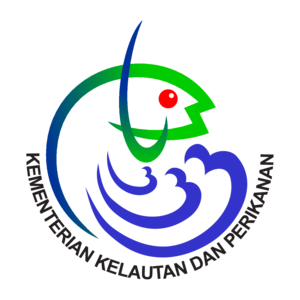PENGARUH ALIH FUNGSI KAWASAN MANGROVE PADA SIFAT SEDIMEN DAN KEMAMPUAN PENYIMPANAN KARBON
Abstract
Keywords
Full Text:
PDFReferences
Adame M. F. & Lovelock, C. E. (2011). Carbon and nutrient exchange of mangrove forests with the coastal ocean. Hydrobiologia 663: 23–50.
Alongi, D.M., Ramanathan, A. L., Kannan, L., Tirendi, F., Trott, L. A. & Prasad, M. B. K. (2005). Influence of human-induced disturbance on benthic microbial metabolism in the Pichavaram mangroves, Vellar–Coleroon estuarine complex, India. Mar Biol147:1033-44.
Alongi, D. M. (2012). Carbon sequestration in mangrove forests. Carbon Management, 3, 313–322.
Alongi, D. M. (2014). Carbon cycling and storage in mangrove forest. Annu. Rev. Mar. Sci 6: 195-219.
Alongi, D. M., Murdiyarso, D., Fourqurean, J. W., Kauffman, J. B., Hutahaean, A., Crooks, S., Lovelock, C. E., Howard, J., Herr, D., Fortes, M., Pidgeon, E. & Wagey, T. (2015). Indonesia’s blue carbon : a globally significant and vulnerable sink for seagrass and mangrove carbon. Wetland Ecology Management, Vol. 23, Issue 3. DOI: 10.1007/s11273-015-9446-y.
Anonim. (2008). Mangrove di Pati tinggal 10 persen. http://megapolitan.kompas.com/read/2008/12/31/0011159/Mangrove.di.Pati.Tinggal.10.Persen. Diunduh pada Desember 2016.
Anonim. (2016). Fact Sheets Bulk Density – Measurement. http://soilquality.org.au/factsheets/bulk-density-measurement. Diunduh pada Desember 2016.
Atwood, T. B., Connolly, R. M., Almahasheer, H., Carnell, P. E., Duarte, C. M., Lewis, C. J. E., Irigoien, X., Kelleway, J. J., Lavery, P. S., Macreadie, P. I., Serrano, O., Sanders, C. J., Santos, I., Steven, A. D. L. & Catherine, E. L. (2017). Global patterns in mangrove soil carbon stocks and losses. Nat Clim Change. Doi: 10.1038/NCLIMATE3326
Boer, W. F. (2000). Biomass dynamics of seagrasses and the role of mangrove and seagrass vegetation as different nutrient sources for an intertidal ecosystem. Aquatic Botany 66: 225–239.
Cannicci, S., Burrows, D., Fratini, S., Smith, T. J., Offenberg, J. & Dahdouh-Guebas, F. (2008). Faunal impact on vegetation structure and ecosystem function in mangrove forests: a review. Aquatic Botany 89.
Carr, J., D’Odorico, P., McGlathery, K., & Wiberg, P. (2010). Stability and bistability of seagrass ecosystems in shallow coastal lagoon: Role of feedbacks with sediment resuspension and light attenuation. J Geophys Res. G03011. 115:1-14. oi:10.1029/2009JG001103.
Chen, G., Azkab, M. H., Chmura, G. L., Chen, S., Sastrosuwondo, P., Ma, Z., Dharmawan, I. W. E. & Chen, B. (2017). Mangroves as a major source of soil carbon storage in adjacent seagrass meadows. Scientific Reports, 7, 42406. http://doi.org/10.1038/srep42406
Damayanti, H. O. (2015). Implementasi Perda Nomor 4 tahun 2003 terhadap pengelolaan mangrove di Kabupaten Pati. Neptunus Jurnal Kelautan, Vol. 19, No.2.
Dislautkan Kab. Pati. (2013). Kondisi Tanaman Mangrove. Laporan Kegiatan. Pati.
Donato, D. C., Kauffman, J. B., Murdiyarso, D., Kurnianto, S., Stidham, M. & Kanninen, M. (2011). Mangrove among the most carbon-rich forest in the tropics. Nature Geoscience, Vol. 4. DOI: 10.1038/NGEO1123.
Eid, E. M. & Shaltout, K. H. (2015). Distribution of soil organic carbon in the mangrove Avicennia marina (Forssk.) Vierh. Along the Egyptian Red Sea Coast. Regional Studies in Marine Science. http://dx.doi.org/10.1016/j.rsma.2015.05.006
FAO. (2005). Global Forest Resources Assessment 2005. Thematic Study on Mangrove, Indonesia Country Profile. FAO Forestry Dept. 12 pp.
FAO. (2005). The World’s Mangrove 1980 - 2005. A Thematic study prepared in the framework of the Global Forest Resources Assessment 2005. FAO Forestry Paper 153. 77 pp.
Feller I.C., Whingham, D. F., O’Neill, J. P. & McKee, K. L. (1999). Effects of nutrient enrichment on within-stand cycling in a mangrove forest. Ecology, Vol. 80,No.7: 2193-2205 pp.
Feller, I. C., Whingham, D. F., McKee, K. L. & Lovelock, C. E. (2003). Nitrogen limitation growth and nutrient dynamics in a disturbed mangrove forest, Indian River Lagoon, Florida. Oecologia 134: 405-414. DOI 10.1007/s00442-002-1117-z
Giesen, W. (1993). Indonesian Mangroves: An Update on Remaining Area and Main Management Issues. International Seminar on Coastal Zone Mangement of Small Island Ecosystem, Ambon,7-10 April 1993
Haryadi J., Basukriadi, A. & Muhadiono. (2013). The study on mangrove litters as a source of nutrients for Blanakan mangrove pond, Subang, West Java. Indonesian Aquaculture Journal Vol. 8, No.1. Hal : 55-64.
Hieu, P. V., Dung, L. V., Tue, N. T. & Omori, K. (2017). Will restored mangroveforests enhance sediment organic carbon and ecosystem carbon storage. Regional Studies in Marine Science. http://dx.doi.org/10.1016/j.rsma.2017.05.003
Ilman, M., Darguscha, P., Dartc, P. & Onrizal. (2016). A historical analysis of the drivers of loss and degradation of Indonesia’s mangroves. Land Use Policy 54: 448-459 p. http://dx.doi.org/10.1016/j.landusepol.2016.03.010 0264-8377/
Kauffman, J. B., Heider, C., Norfolk, J. & Payton, F. (2014). Carbon stocks of intact mangroves and carbon emissions arising from their conversion in the Dominican Republic. Ecological Applications, 24(3), pp. 518–527.
Kristensen, E., Bouillon, S., Dittmar, T. & Marchand, C. (2008). Organic carbon dynamics in mangrove ecosystems: areview. Aquat Bot 89:201–219
Lal, R. (2014). Soil conservation and ecosystem services. International Soil and Water Conservation Research, Vol. 2, No. 3, 2014, pp. 36-47.
Lunstrum, A. & Chen, L. (2014). Soil carbon stocks and accumulation in young mangrove forests. Soil Biology and biochemistry 75: 223-232.
Mandal, S., Ray, S. & Ghosh, P. B. (2012). Comparative study of mangrove litter nitrogen cycling to the adjacent estuary through modelling in pristine and reclaimed islands of Sundarban mangrove ecosystem, India. Environmental Sciences 8: 340 – 362.
Marcello, H. (2011). Perubahan Mangrove di Wilayah Pesisir Indramayu. Fakultas Matematika dan Ilmu Pengetahuan Alam Departemen Geografi. Skripsi. Universitas Indonesia.
Murdiyarso, D., Purbopusito, J., Kauffman, J. B., Warren, M. W., Sasmito, S. D., Donato, D. C., Manuri, S., Krisnawati, H., Taberima, S. & Kurnianto, S. (2015). The potentials of Indonesian mangrove forests for global change mitigation. Nat Clim Change. Doi:10.1038/nclimate2734
Nguyen, T. H. H. & Mai, S. T. (2007). Effects of mangrove plantation on carbon and nitrogen stock accumulated in soil. Tap Chi Sinh Hoc, Journal of Biology. Vol. 29, No. 3. DOI: 10.15625/0866-7160/v29n3.5388.
Valerie, X. H. Phang, V. X. H., Chou, L. M. & Friess, D. A. (2015). Ecosystem carbon stocks across a tropical intertidal habitat mosaic of mangrove forest, seagrassmeadow, mudflat and sandbar. EARTH SURFACE PROCESSES AND LANDFORMS, Earth Surf. Process. Landforms 40: 1387–1400. DOI: 10.1002/esp.3745.
Prayudha, E. D., Sulardiono, B. & Hendrarto, B. (2014). Strategi kelompok pantai Lestari dalam pengembangan kegiatan rehabilitasi mangrove di Desa Karangsong Kabupaten Indramayu. Diponegoro Journal of Maquares, Vol. 3 No.3. Hal : 80-87.
Reef, R., Feller, I. C. & Lovelock, C. E. (2010). Nutrition on mangroves. Invited Review: Part of An Invited Issue on Tree Nutrition. Tree Physiology 30, 1148–1160. doi:10.1093/treephys/tpq048
Scharler , U. M. (2011). Whole Food-Web Studies: Mangroves. University of KwaZulu-Natal, Durban, South Africa.
Setyawan, A. D., Winarno, K. & Purnama, P. C. (2003). Ekosistem Mangrove di Jawa: 1. Kondisi Terkini. Biodiversitas Vol. 4, No. 2, Juli 2003, hal. 130-142.
Stringer, C. E., Trettin, C. C. & Zarnoch, S. J. (2016). Soil properties of mangroves in contrasting geomorphic settings within the Zambezi River Delta, Mozambique. Wetlands Ecol Manage (2016) 24:139–152. DOI 10.1007/s11273-015-9478-3.
Trott, L. A., McKinnona, A. D., Alongi, D. M., Davidson, A. & Burford, M. A. (2004). Carbon and nitrogen processes in a mangrove creek receiving shrimp farm effluent. Estuarine, Coastal and Shelf Science 59: 197-207.
Verhoeven, J. T. A., Laanbroek, H. J., Rains, M. C., & Whigham, D. F. (2014). Effects of increased summer flooding on nitrogen dynamics in impounded mangroves. Journal of Environmental Management 139: 217-226pp. http://dx.doi.org/10.1016/j.jenvman.2014.02.035.
Van Der Kaars, S. & Van Den Bergh, G. D. (2004). Anthropogenic changes in the landscape of westJava (Indonesia) during historic times, inferred froma sediment and pollen record from Teluk Banten. Journal of Quaternary Science 19(3): 229–239. DOI: 10.1002/jqs.804.
University of Waikato. (2010). http://sciencelearn.org.nz/Contexts/The-Ocean-in-Action/Sci-Media/Interactive/Carbon-cycle. Diiunduh pada Desember 2016.
DOI: http://dx.doi.org/10.15578/jkn.v13i3.6620
Copyright (c) 2018 Jurnal Kelautan Nasional
Copyright of Jurnal Kelautan Nasional (p-ISSN 1907-767X, e-ISSN 2615-4579)
Pusat Riset Kelautan
Badan Riset dan Sumberdaya Manusia Kelautan dan Perikanan
Kementerian Kelautan dan Perikanan
Index by
 Jurnal Kelautan Nasional
Jurnal Kelautan Nasional
















